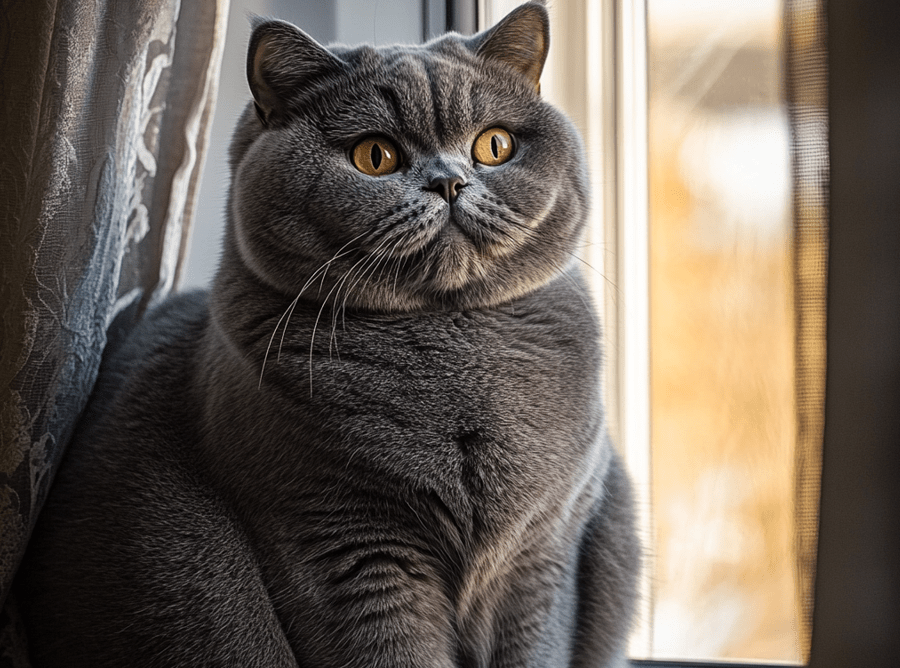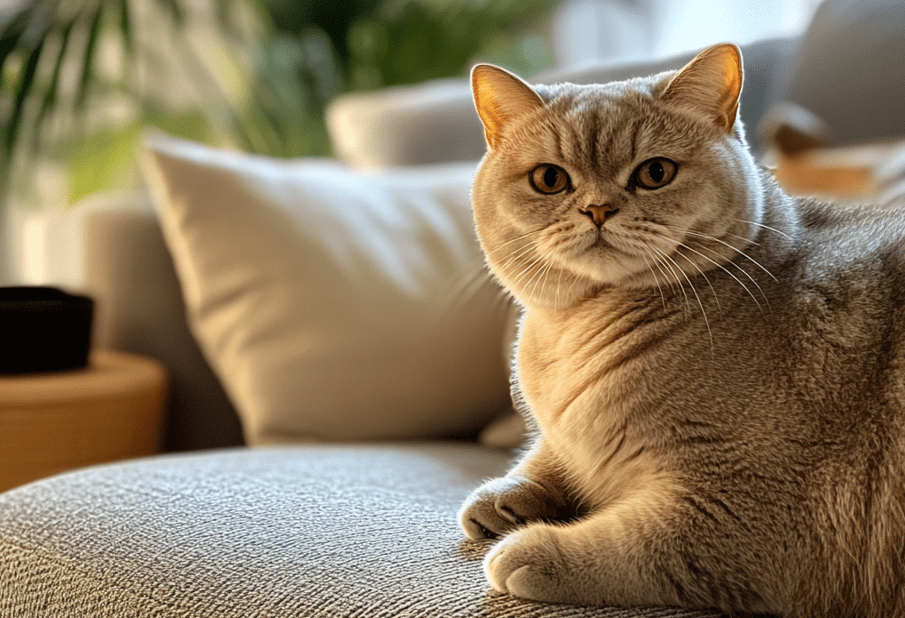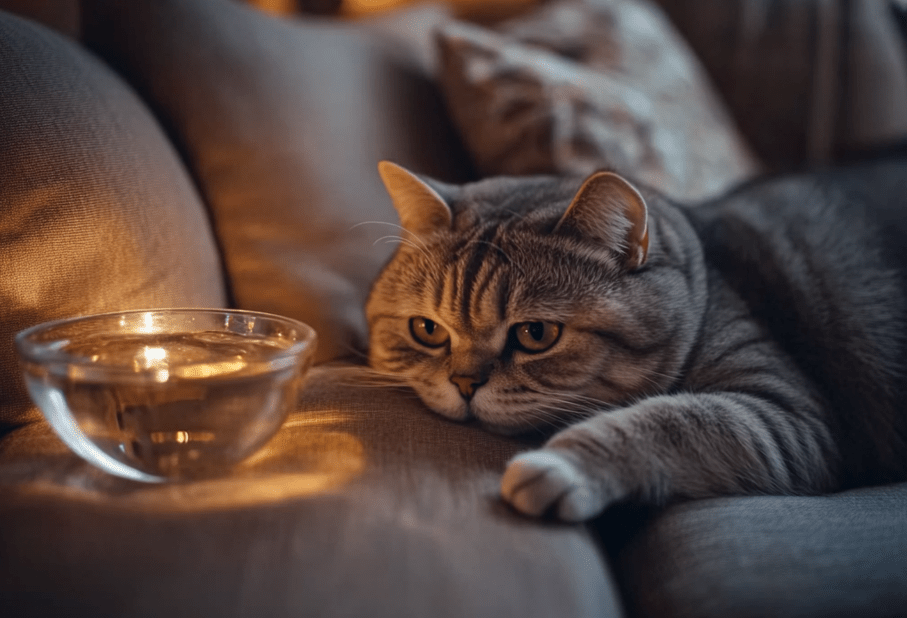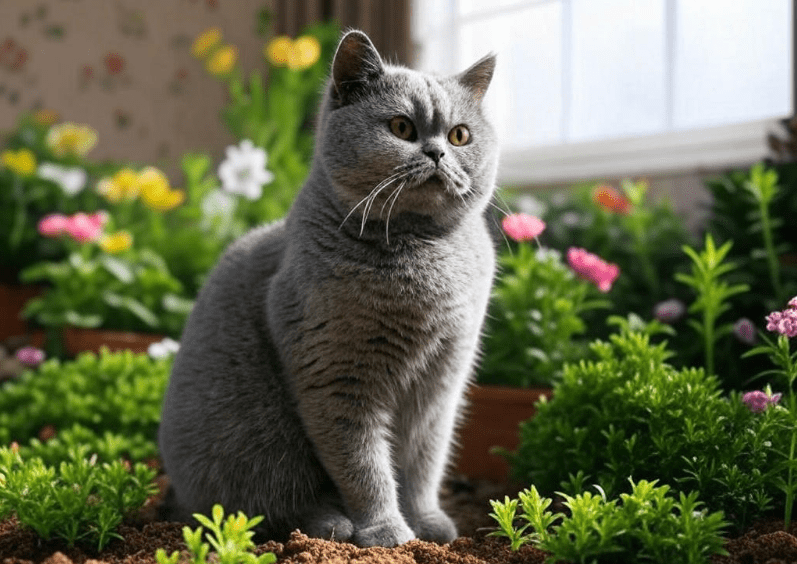
British Shorthairs are known for their plush coats and sturdy builds, but their paws and pads often go overlooked in their care routine. Knowing how to care for British Shorthair paws is essential to keeping your cat healthy and comfortable. Their paw pads are sensitive and can be prone to issues like dryness, cracks, or infections if not properly maintained. In this comprehensive guide, we’ll cover everything you need to know about paw care for your British Shorthair, from cleaning and moisturizing to spotting problems and preventing injuries.
Why Paw Care Matters for British Shorthairs
A British Shorthair’s paws are their foundation—they use them for walking, jumping, playing, and grooming. Healthy paw pads help them navigate their environment comfortably, while neglected paws can lead to pain, infections, or mobility issues. British Shorthairs, with their heavier builds, put extra pressure on their paws, making regular care even more important. Paw pads also act as a barrier against rough surfaces, extreme temperatures, and potential irritants, so keeping them in top condition is crucial for your cat’s overall well-being.
Understanding Your British Shorthair’s Paw Structure
A cat’s paw consists of several key parts: the digital pads (under each toe), the metacarpal pad (the larger central pad), and the carpal pad (a smaller pad higher up on the front legs). These pads are covered in thick, protective skin that acts as a shock absorber. British Shorthairs often have slightly larger, rounder paws compared to other breeds, which can make them more prone to collecting debris between their toes. The fur around their paws is typically short but dense, requiring regular attention to prevent matting or irritation.
Step-by-Step Guide to Care for British Shorthair Paws
Here’s a detailed, actionable guide to keeping your British Shorthair’s paws and pads healthy and comfortable.

Step 1: Inspect Their Paws Regularly
Make paw inspections a part of your weekly routine. Gently hold your British Shorthair’s paw and check for signs of trouble, such as redness, swelling, cuts, or foreign objects like thorns or gravel stuck between the toes. Look for dryness, cracking, or peeling on the paw pads, as these can lead to discomfort. Also, check for unusual odors, which might indicate an infection. British Shorthairs may resist paw handling at first, so start slowly, using treats and praise to make the experience positive.
What to Look For:
Cracks or Cuts: Small injuries can become infected if not addressed.
Foreign Objects: Grass seeds, litter, or small pebbles can get lodged between toes.
Discoloration: Pale or overly red pads might signal circulation issues or irritation.
Excessive Hair: Long fur between the toes can trap dirt or cause matting.
Step 2: Clean Their Paws Regularly
British Shorthairs can pick up dirt, litter, or other debris on their paws, especially if they go outside or use a litter box. Cleaning their paws helps prevent irritation and keeps their pads healthy.
How to Clean Their Paws:
Prepare Supplies: Use a soft, damp cloth or pet-safe wipes. Avoid harsh soaps or chemicals that might irritate their skin.
Wipe Gently: Focus on the paw pads and between the toes, where debris often collects. Be gentle to avoid startling your cat.
Dry Thoroughly: Use a clean, dry towel to remove moisture, as damp paws can lead to fungal infections.
Reward Them: Offer a treat or affection to make the process a positive experience.
For stubborn dirt or sticky substances (like sap), you can use a small amount of cat-safe shampoo diluted in water, but rinse thoroughly and dry well afterward. Avoid soaking their paws for too long, as this can soften the pads and make them more prone to injury.
Step 3: Moisturize Dry Paw Pads
British Shorthair paw pads can become dry and cracked, especially in dry climates or during winter when indoor heating reduces humidity. Moisturizing helps maintain the pads’ natural elasticity and prevents painful cracking.
Choosing a Moisturizer:
-
Use a pet-safe paw balm or wax, such as those containing natural ingredients like shea butter, coconut oil, or beeswax.
-
Avoid human lotions, as they may contain ingredients toxic to cats if ingested during grooming.
-
Look for products specifically labeled for cats to ensure safety.
How to Apply:
-
Clean and dry the paws first.
-
Apply a thin layer of balm to the paw pads, massaging it in gently.
-
Distract your cat with a toy or treat for a few minutes to let the balm absorb and prevent them from licking it off immediately.
-
Apply 2-3 times per week, or as needed, depending on the condition of their pads.
Step 4: Trim the Fur Around Their Paws
The fur between a British Shorthair’s toes can grow long and trap dirt, litter, or moisture, leading to irritation or infections. Trimming this fur keeps their paws clean and reduces the risk of matting.
Trimming Tips:
-
Use blunt-tipped scissors or a small pet grooming trimmer to avoid accidental cuts.
-
Work in a well-lit area and hold the paw gently but firmly.
-
Trim only the excess fur that extends beyond the paw pads—don’t cut too close to the skin.
-
If your cat is nervous, trim one paw at a time over several sessions, rewarding them with treats.
Step 5: Protect Their Paws from Extreme Conditions
British Shorthairs are indoor cats by nature, but if they venture outside, their paws can be exposed to harsh conditions. Hot pavement in summer can burn their pads, while cold, icy surfaces in winter can cause frostbite or cracking. Salt or chemical de-icers used on roads can also irritate their paws.
Protective Measures:
Summer: Avoid walks on hot pavement—test the surface with your hand; if it’s too hot for you, it’s too hot for your cat. Stick to grassy areas or keep them indoors during peak heat.
Winter: Use pet-safe booties to shield their paws from cold and chemicals. If booties aren’t an option, wipe their paws with a damp cloth after outdoor time to remove salt or de-icers.
Paw Wax: Apply a protective paw wax before outdoor exposure to create a barrier against harsh elements.
Step 6: Trim Their Nails Regularly
Long nails can affect how your British Shorthair walks, putting extra pressure on their paw pads and potentially causing discomfort. Regular nail trims are an essential part of paw care.

How to Trim Nails:
-
Use a cat-specific nail clipper or guillotine-style trimmer.
-
Hold the paw gently and press on the pad to extend the nail.
-
Trim only the sharp tip of the nail, avoiding the quick (the pink area inside the nail that contains blood vessels).
-
If you accidentally cut the quick, use styptic powder to stop the bleeding.
-
Trim every 2-3 weeks, depending on how quickly their nails grow.
If your British Shorthair resists nail trims, try wrapping them in a towel or doing one paw at a time with breaks in between. Always reward them afterward to build a positive association.
Step 7: Check for Injuries and Infections
British Shorthairs can develop paw issues if injuries or infections go unnoticed. Common problems include cuts, burns, fungal infections (like yeast overgrowth between toes), or bacterial infections from embedded debris.
Signs of Trouble:
-
Limping or favoring one paw.
-
Excessive licking or chewing of the paws.
-
Swelling, redness, or warmth in the paw area.
-
A foul odor, which might indicate an infection.
-
Sores, scabs, or oozing on the pads.
What to Do:
-
For minor cuts or scrapes, clean the area with a pet-safe antiseptic and monitor for signs of infection.
-
If you notice swelling, odor, or persistent symptoms, consult a veterinarian. They may prescribe an antibiotic or antifungal treatment.
-
Remove foreign objects carefully with tweezers, but if they’re deeply embedded, seek professional help to avoid causing pain.
Step 8: Encourage Healthy Paw Habits
Encourage your British Shorthair to engage in activities that naturally maintain their paw health. Scratching posts, for example, help them shed the outer layer of their nails, reducing the need for frequent trims. Providing a variety of textures to walk on—like soft carpets, grass, or cat-safe mats—can help keep their paw pads conditioned without becoming too soft or too rough.
Common Paw Problems in British Shorthairs and How to Address Them
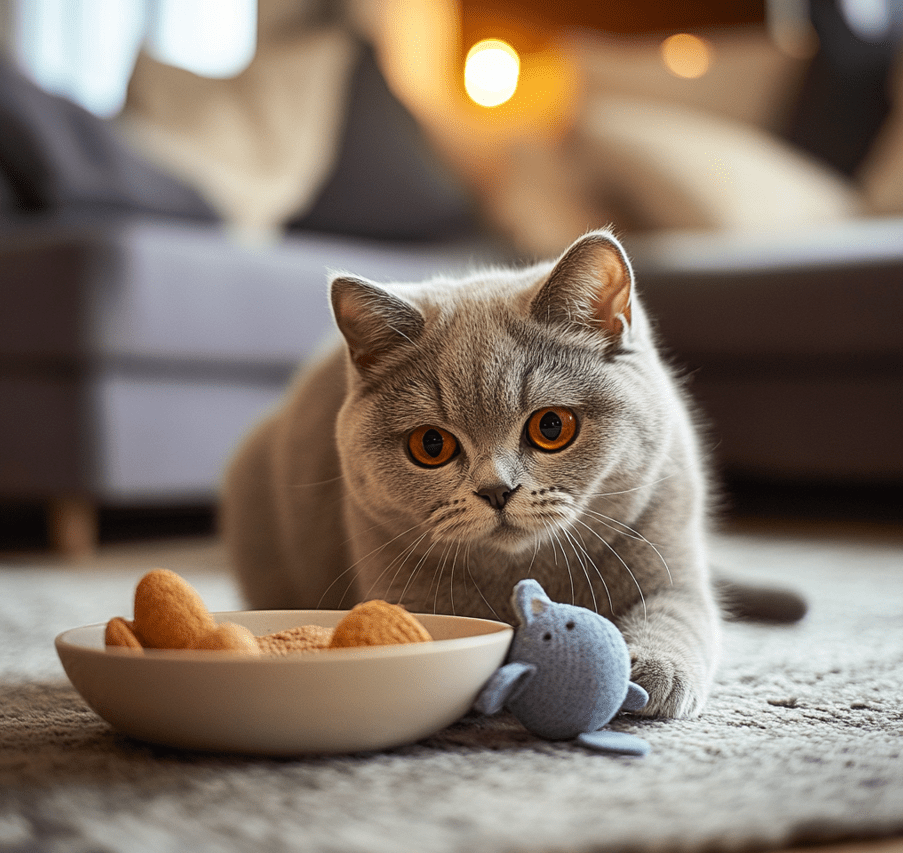
British Shorthairs can face specific paw-related issues due to their build and lifestyle. Here’s how to handle common problems:
1. Dry or Cracked Paw Pads
Dryness is common in British Shorthairs, especially in dry climates or seasons. Cracked pads can be painful and prone to infection. Regular moisturizing with a pet-safe balm, as mentioned earlier, is the best solution. Increasing humidity in your home with a humidifier can also help prevent dryness. If cracks are deep or bleeding, consult a vet to rule out underlying issues like allergies or nutritional deficiencies.
2. Allergies Affecting the Paws
Allergies—whether to food, pollen, or chemicals—can cause paw irritation in British Shorthairs. Symptoms include redness, itching, or excessive licking. Work with your vet to identify the allergen through an elimination diet or environmental changes. In the meantime, clean their paws after outdoor time to remove potential irritants, and use a hypoallergenic paw balm to soothe the skin.
3. Pododermatitis (Inflammation of the Paws)
Pododermatitis is a condition where the paw pads become inflamed, often due to allergies, infections, or immune issues. Symptoms include swelling, redness, and sometimes ulcers on the pads. If you suspect pododermatitis, a vet visit is essential—they may prescribe anti-inflammatory medication or antibiotics, depending on the cause.
4. Ingrown Nails
If nails aren’t trimmed regularly, they can grow into the paw pad, causing pain and infection. Check for ingrown nails during your inspections, especially if your cat is limping or licking their paws excessively. A vet can safely remove an ingrown nail and provide antibiotics if an infection has developed.
Preventative Tips for Long-Term Paw Health
Prevention is the best way to keep your British Shorthair’s paws healthy. Here are some proactive steps:
Maintain a Clean Environment: Keep their litter box clean and free of sharp debris. Vacuum regularly to reduce dust and small particles that might irritate their paws.
Monitor Their Weight: British Shorthairs are prone to obesity, which puts extra strain on their paws. Keep them at a healthy weight through diet and exercise to reduce pressure on their pads.
Provide Safe Surfaces: Avoid letting your cat walk on rough or abrasive surfaces for long periods, as this can wear down their paw pads.
Hydration and Diet: Ensure they have access to fresh water and a diet rich in omega-3 fatty acids, which support skin and paw health.
When to Consult a Veterinarian
If you notice persistent issues—such as swelling, limping, or signs of infection—that don’t improve with basic care, it’s time to see a vet. They can perform a thorough examination, possibly including skin scrapings or blood tests, to diagnose underlying conditions like allergies, infections, or systemic issues. For severe injuries, such as deep cuts or burns, immediate veterinary attention is crucial to prevent complications.
Conclusion: Prioritizing Your British Shorthair’s Paw Health

Caring for your British Shorthair’s paws and pads is a vital part of their overall health and happiness. By incorporating regular inspections, cleaning, moisturizing, and nail trims into your routine, you can prevent common issues and ensure their paws remain healthy and comfortable. Pay attention to their environment, diet, and behavior to catch problems early, and don’t hesitate to seek professional help if needed. With consistent care, your British Shorthair will be able to leap, play, and explore with confidence, knowing their paws are well-protected.

